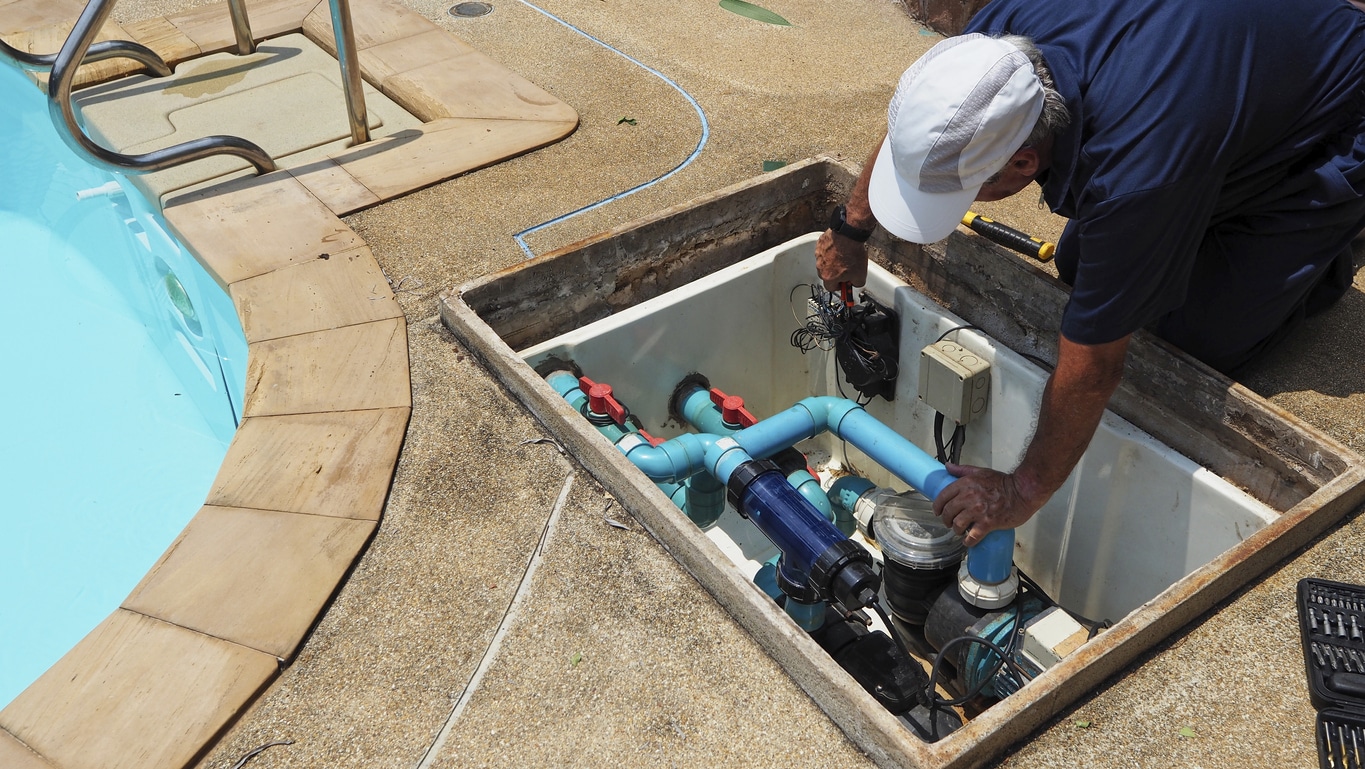Today, electrical systems play a crucial role in powering our homes and appliances. While it’s always advisable to seek professional help for major electrical work, there are several common issues that homeowners can address on their own.
This comprehensive guide aims to empower you with the knowledge and skills needed to perform basic home electrical repairs safely.
Table of contents
- What are the Components of a Home Electrical System?
- What Electrical Safety Precautions Should I Take?
- Essential Tools for DIY Electrical Repairs
- Common Electrical Issues
- Step-by-Step Guide to DIY Electrical Repairs
- How Do I Deal with Electrical Emergencies?
- When Do I Call a Professional for an Electrical Repair?
- General Tips:
- FAQs
- Conclusion
- References
- Recommendations
What are the Components of a Home Electrical System?
A home electrical system comprises various components that work together to distribute and regulate electricity throughout the residence. Understanding these components is essential for troubleshooting and ensuring the safe operation of your electrical system. Here are the primary components of a home electrical system:
Service Entrance
The service entrance is the point where the electrical supply from the utility company enters your home. It typically includes the service drop, which is the overhead power line, or the service lateral, which is the underground power line.
Meter
The meter is a device that measures the amount of electricity consumed in your home. It is usually near the service entrance and is read by utility personnel for billing.
Circuit Breakers
Circuit breakers are switches designed to automatically interrupt electrical flow in the event of a circuit overload or short circuit. They help prevent electrical fires by cutting off power when necessary. Modern homes often use circuit breakers instead of fuses for improved safety and convenience.
Fuses
Fuses are safety devices that interrupt the flow of electricity when a circuit is overloaded. While less common in modern homes due to the prevalence of circuit breakers, older homes may still have fuse boxes.
Wiring
These comprise conductors that carry electricity from the main panel to various outlets, switches, and appliances throughout the home. Wiring can be categorized into different circuits, each serving a specific area or appliance.
Outlets
Outlets, also known as receptacles, provide points for connecting electrical devices to the electrical system. Common types include duplex outlets (two receptacles in one unit) and GFCI (Ground Fault Circuit Interrupter) outlets, which provide additional safety in areas with moisture.
Grounding System
The grounding system provides a path for electrical currents to flow safely into the ground in the event of a fault. It includes grounding electrodes, grounding conductors, and the grounding electrode conductor, helping to protect against electrical shock and reduce the risk of fire.
Related Article: How Does a Master Key Work on Various Doors?
What Electrical Safety Precautions Should I Take?
When dealing with home electrical systems, ensuring electrical safety is paramount. Adhering to proper safety precautions can prevent accidents, fires, and electrical shocks.
Here are essential electrical safety precautions to keep in mind:
- Turn Off Power
- Use lockout/tagout procedures when working on electrical systems.
- Use a voltage tester to confirm that a circuit is de-energized before starting work.
- When working with electricity, wear appropriate Personal Protective Equipment (PPE), such as safety glasses, insulated gloves, and flame-resistant clothing.
- Inspect all tools and equipment for any damage. Damaged tools can increase the risk of accidents and injuries.
- Avoid working on electrical components in wet or damp conditions.
- Ensure that your work area is well-lit to see clearly and avoid mistakes.
- Avoid overloading circuits by plugging too many devices into a single outlet.
- Install Ground Fault Circuit Interrupters (GFCIs) in areas where water is present, such as kitchens and bathrooms.
- Leave major electrical projects, such as panel upgrades or rewiring, to licensed professionals.
- Consider installing tamper-resistant outlets, especially in homes with young children.
Essential Tools for DIY Electrical Repairs
It is one thing to carry out electrical repairs and another thing to equip yourself with the right tools for your work. Here’s a list of essential tools that every DIY enthusiast should have in their electrical toolkit:
- Screwdrivers
- Needle-nose pliers
- Wire strippers
- Lineman’s pliers
- Voltage tester
- Circuit tester
- Tape measure
- Adjustable wrench
- Flashlight
- Hammer
- Drill and bits
- Multimeter
- Cable ripper
- Safety gear
- Tool bag
Common Electrical Issues
Here are some prevalent electrical issues that may arise in homes:
- Tripped Circuit Breaker: Circuit breakers are designed to trip and cut off power when a circuit is overloaded. This can happen if you plug too many appliances into the same circuit. Identify the overloaded circuit, unplug some devices, and reset the breaker.
- Faulty Outlets: Outlets can wear out over time or become damaged. Common issues include loose wiring, broken receptacles, or faulty connections. Replace or repair outlets that are not providing a secure connection.
- Flickering Lights: Flickering lights may result from various issues, including loose bulbs, poor connections, or issues within the electrical system. Check and tighten bulbs, and if the problem persists, investigate the wiring or consult a professional.
- Electrical Surges: Surges can damage electronic devices and appliances. They may result from lightning strikes, faulty wiring, or issues with the power grid. Use surge protectors to safeguard sensitive equipment.
- Dead Outlets: Outlets that are not functioning could cause a tripped GFCI outlet, a faulty outlet, or issues with the wiring. Check for tripped GFCIs, inspect the outlet for damage, and troubleshoot the wiring if necessary.
- Inconsistent Power: Fluctuations in power, such as dimming or brightening lights, may show problems with the electrical system. Check for loose connections, damaged wiring, or issues with the power supply.
- Breaker Panel Issues: Problems with the breaker panel, such as a buzzing sound, burnt smell, or physical damage, require immediate attention.
See this: How is Fabric Created?
Step-by-Step Guide to DIY Electrical Repairs
Performing DIY electrical repairs can be both rewarding and cost-effective if done correctly and safely. Below is a step-by-step guide to help you navigate common electrical issues in your home:
Step 1: Identify the Problem
Before starting any repairs, identify the specific electrical issue. Isolate the affected area and determine whether it’s a tripped circuit breaker, a faulty outlet, flickering lights, or another issue.
Step 2: Turn Off Power
Safety is paramount. Before working on any electrical component, turn off power to the affected circuit at the main breaker panel. Use a voltage tester to confirm that the power is off.
Step 3: Assess the Wiring
Examine the wiring for any visible damage, such as frayed insulation, exposed wires, or loose connections. If you find damaged wiring, it should be repaired or replaced.
Step 4: Reset Tripped Circuit Breaker
If the issue is a tripped circuit breaker, locate the tripped breaker in the main panel. Move the breaker handle to the ‘off’ position and then back to the ‘on’ position.
Replace Faulty Outlet
For a faulty outlet, turn off the power to the circuit, remove the outlet cover, and unscrew the outlet from the electrical box. Check for loose or damaged wires. Replace the outlet if necessary, ensuring proper wire connections.
Fix Flickering Lights
If lights are flickering, check and tighten any loose bulbs. If the issue persists, it could be a loose wire in the fixture or the switch. Turn off the power and inspect the wiring, tightening connections as needed.
Manage Overloaded Circuits
If circuits are consistently overloaded, redistribute the load by plugging devices into different circuits. Consider upgrading the circuit or consulting an electrician for a long-term solution.
Step 5: Test the Repairs
After completing the repairs, turn the power back on and test the affected outlets, switches, or lights to ensure they are functioning correctly. Use a multimeter to verify voltage levels if necessary.
Step 6: Monitor for Further Issues
After completing the repairs, monitor the system for any signs of recurring issues. If problems persist or new issues arise, it may be an indication of a more complex problem that requires professional attention.
How Do I Deal with Electrical Emergencies?
Here’s a guide on how to deal with common electrical emergencies:
Power Outages
- Check the Neighborhood
- Reset Circuit Breakers
Electrical Fire
- Call Emergency Services
- Use a Fire Extinguisher
Electric Shock
- Ensure Safety First
- Call for Medical Help
Burning Smell or Sparks
- Turn Off Power
- Evacuate
Read: 50 inspirational leadership personalities that you don’t know about
When Do I Call a Professional for an Electrical Repair?
Knowing when to call a professional electrician is essential to ensure the safety and reliability of your home’s electrical system. While DIY electrical repairs can address some issues, certain situations warrant the expertise of a qualified professional.
Here are scenarios in which you can consider calling a professional electrician:
- Outdated Wiring
- Electrical Panel Issues
- Major Home Renovations
- Appliance Installation
- Home Inspections
- New Lighting Fixture Installation
- Smart Home Technology Integration
General Tips:
- Have an Emergency Kit: Keep an emergency kit with essential items, including flashlights, batteries, a first aid kit, and important contact numbers.
- Learn Basic First Aid: Familiarize yourself with basic first aid, especially CPR, in case of emergencies.
- Know the Location of Emergency Shut-offs: Be aware of the location of the main circuit breaker, water shut-off valve, and gas shut-off valve in your home.
FAQs
Signs of serious electrical issues include persistent flickering lights, burning smells, tripping breakers, or any issues involving the electrical panel. If in doubt, it’s safer to consult a professional to assess and address the problem.
No, it is never safe to replace a light switch or outlet without turning off the power at the circuit breaker. Always ensure the power is off before working on any electrical component to avoid the risk of electric shock.
GFCI outlets are designed to quickly shut off power when they detect imbalances in electrical currents, providing protection against electrical shocks. They are required in areas with water exposure, such as kitchens and bathrooms.
Adding new outlets involves understanding the electrical load and proper wiring. It’s recommended to consult a professional electrician to ensure the new outlets are safely installed and comply with electrical codes.
Conclusion
This comprehensive guide aims to empower homeowners with the knowledge, and skills needed to tackle common electrical issues. By understanding the basics of home electrical systems, having the right tools, identifying common issues, and following step-by-step instructions, you can perform DIY electrical repairs safely and confidently.
Remember, while DIY repairs are suitable for minor issues, always seek professional help for complex or potentially dangerous electrical work.
References
- Fixitclub.com – Electrical Repairs
- Lawinsider.com – Electrical Repairs Definition
- Thespruce.com – Electrical Problems & Repairs





